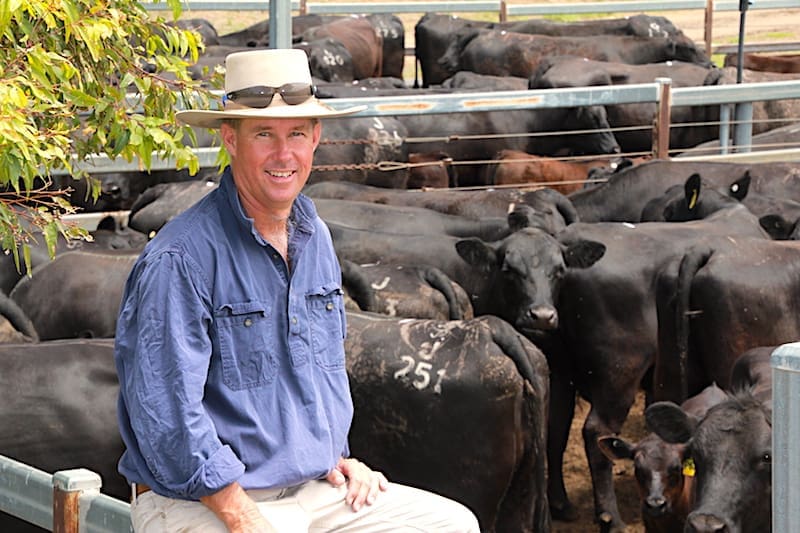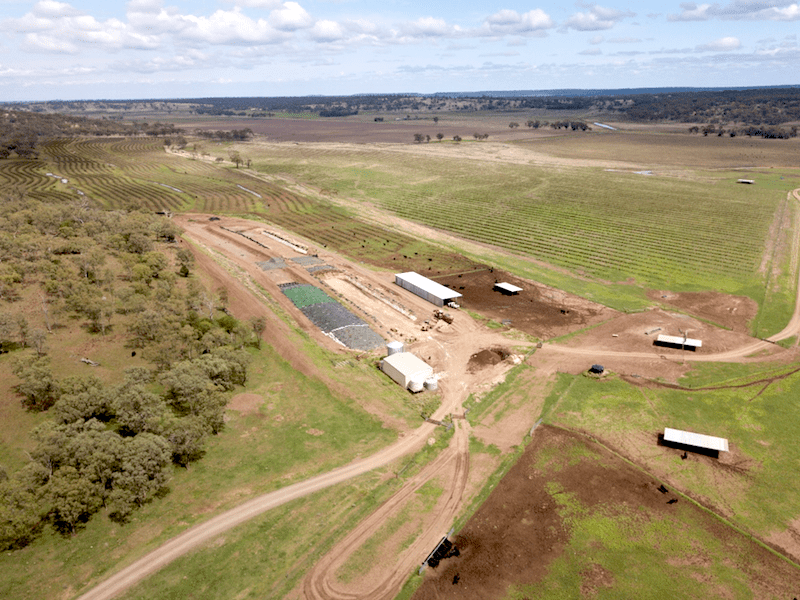
Access to a combination of leucaena, improved pastures and silage-based rations, mixed on site daily and delivered into supplementary feed bunks, underpins the intensive feeding and production system on Dalby Downs.
WHEN dozens of forage tree experts from around the world converged on an intensive cattle production system near Dalby this week, the enthusiasm was so palpable it was hard to get a leucaena the conversation.
Bad jokes aside, there was no joking about the level of interest and discussion that ensued when a busload of leucaena producers and researchers from various parts of the world had the opportunity to exchange knowledge and ideas with Australian leucaena producers on several properties around Southern Queensland this week.
The group was in Australia for a three-day tour ahead of the International Leucaena Conference being held at the University of Queensland today (Thursday) through to Saturday.
Beef Central caught up with the tour as it visited Dalby Downs near Dalby on Tuesday, a unique operation where leucaena is helping a successful stud cattle operation to punch well above its weight in terms of productivity and genetic advancement.
Dalby Downs has expanded over the past 15 years from 700 acres to 7500 acres through the purchase of neighbouring properties by its owners the Peden and Thiess Families.
In that time it has been developed by managers Jonathan (Jono) and Kerry Schmidt into a leucaena and silage-based production powerhouse.
The 7500 acre (3030ha) aggregation comprises:
- 2700 acres (1095ha) of leucaena (all cv Tarramba, except 130 acres (52ha) of cv Cunningham and 40 acres of cv Wondergraze) interspersed with primarily bambatsi, Rhodes, purple pigeon grass, buffel and native bluegrass;
- 2000 acres (810ha) of cultivation used to grow oats for grazing, forage sorghum for silage and barley for hay; and
- 2800 acres (1135ha) of improved pastures on basalt ridges comprising primarily buffel, Rhodes and blue grass pastures.
The property is the headquarters of the Burenda Angus and Brangus cattle stud, running 3000 cattle in total and producing 500-600 paddock and catalogue sale bulls per year from 1200 cows. It also runs a number of commercial Angus cows along with bull breeding units.
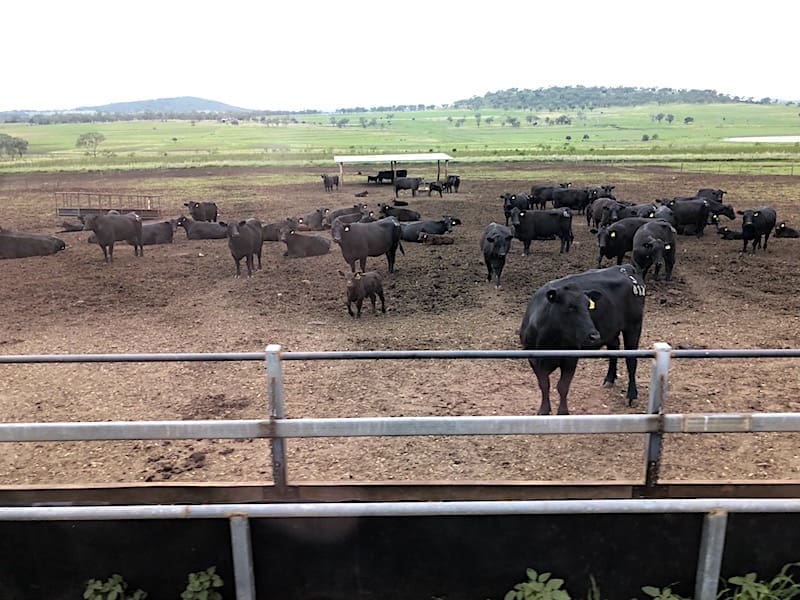
One month before they calve cows are moved into pens like this where they have access to leucaena (at the rear of the pen) and a supplementary silage-based ration (via bunks in the foreground), which includes cottonseed, hay and/or grape marc, mollasses and a small amount of grain. The 70 cows in this pen had AI calves at foot, all born in August within three weeks of each other, and all individually recorded at birth for stud herd recording. They will remain in the pen for another two months and have CIDRs implanted in preparation for the next fixed time AI program. The combination of leucaena and silage supplementation ensures cows are in a forward cycling condition in preparation for AI.
Cows calve and are joined (using fixed time AI) on leucaena/silage and when pregnant are sent to agistment properties in western Queensland to graze improved grass pastures from November to June. They run under a commercial conditions whilst on Dalby Downs.
The weaners are brought back from the agistment properties in March and are fed on leucaena/silage and then oats over winter, before returning to leucaena/silage. Bulls run on leucaena/silage and oats from weaning until sale.
The various stands of leucaena spread around the property enable the operation to run the number of cattle it does.
Working with frost
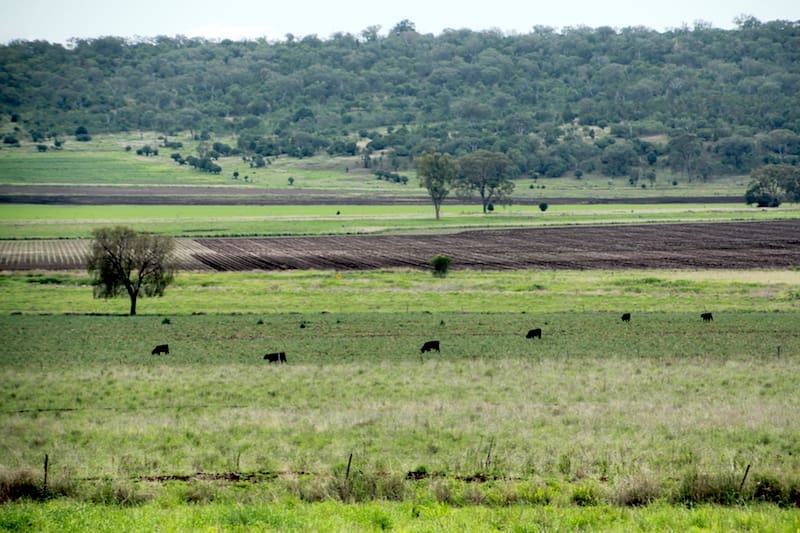
Dalby Downs ranges from heavy black cracking clay alluvial soils on flats to red clay soils on stony ridges. The area has a long-term annual rainfall average of 24 inches (610mm).
Initially it was said the tropical tree legume would not survive frost-prone areas south of Central Queensland.
However, as many other operations in Southern Queensland and northern New South Wales are now proving, the Dalby Downs experience shows frost can in fact play a beneficial role in managing leucaena, particularly through controlling its height.
The property receives 20 or so frosts a year on average, and as many as 30 in a bad year. This winter a particularly severe – 9.0 Degrees Celcius event burned back large areas of the Dalby Downs leucaena back to the ground.
Fros- effected leucaena on the flats has to regrow from the base, and where leucaena is more sheltered and frosted lightly it will grow back from the trunk and the sides.
While having to recover from frost damage was not ideal, Jono said the upside was the regulating effect of winter on growth, which kept the height of leucaena in check on Dalby Downs and meant leaucaena did not have to be chopped back.
“If we had a really wet year I wouldn’t have mechanically chop it,” he said.
“And in those years where it does get away from us, as soon as we get to March, April or May, what I find is our Angus cows and calves are our best asset for trimming them.”
Of the three varieties of leucaena on Dalby Downs, Wondergraze has proven to be the most frost tolerant, he said.
Economics justifies establishment
Jono estimated the cost of establishing leucaena on Dalby Downs (most of which was established in the first five years there) was in the vicinity of $200 per acre on average. The productivity provided had justified the cost of establishment and maintenance, he said.
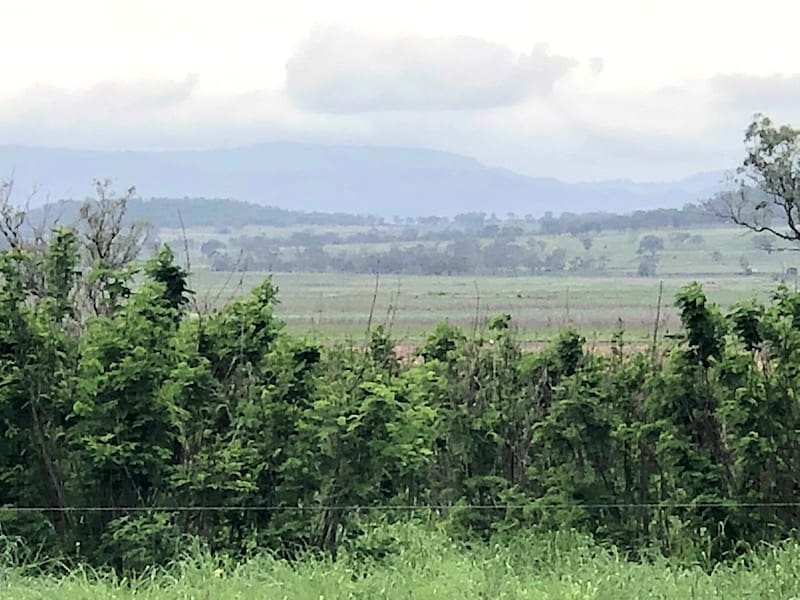
Just three weeks ago this two-acre paddock was ‘red dirt and bare stalks’ after one week of crash grazing with 30-40 cattle, after which the cattle were removed. “This is how it should be grazed, it always comes back beautifully,” Jono said. “If I graze that off today, and if I have a bit of rain within three weeks, we could then put cattle back in there. We will probably get three or four of those grazings over summer pretty easily out of that.”
In an area with a typical carrying capacity on grass of around one breeder to 10 acres, Mr Schmidt said his experience over the past 15 years indicated that the carrying capacity of leucaena and grass pastures was the equivalent of one breeder to five or six acres.
Farming country on the property that not so long ago was growing two to three tonne per acre sorghum crops is now established to leucaena.
“As our cattle operation has grown, I have gone and planted some of our best country to leucaena and I just haven’t looked back,” he said.
“Every time it rains 10-15mm here we get something off our leucaena.
“Every time it rains 10-15mm on our farming country I have to go and spray the weeds, and it costs us money.
“Our costs here for growing crops are relatively high, we have smaller areas and we have higher overheads.
“We find with leucaena and grass we keep trickling along and going forwards, whereas with the farming side, if you’re growing grain, it is a more boom bust type scenario.”
Row spacings at centre of international info exchange
International visitors to Dalby Downs on Tuesday fired many questions at Jono but a key subject of discussions was row spacings.
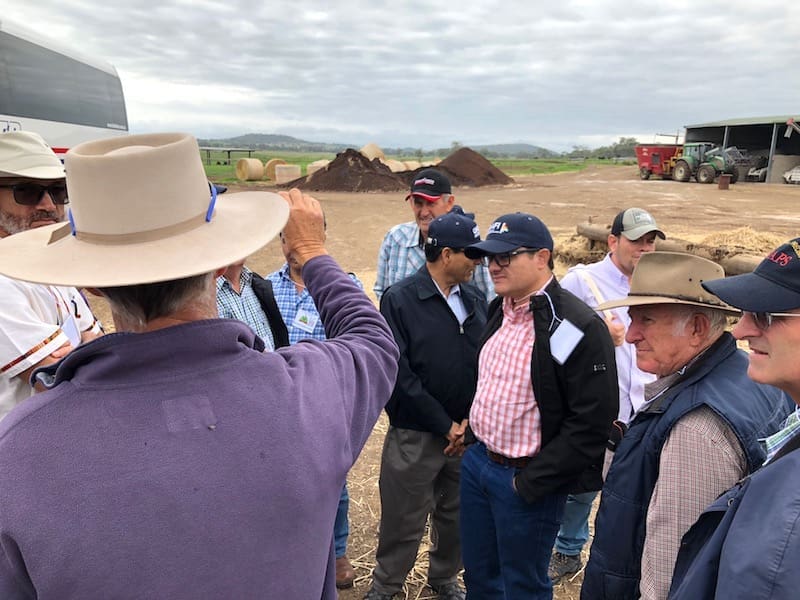
A group of 33 leucana enthusiasts from North and South America, Asia, Africa, India and Australia visited Dalby Downs this week as part of the International Leucaena Conference tour.
Mr Schmidt has planted most of the leucaena rows on Dalby Downs at widths of 6-7 metres, partly because that was what best suited his planting equipment.
This was a little narrower than the 7 to 10 metre spacings that some recommended for the area – one view is that having rows too close will choke out the grass and inhibit the establishment of pasture between the rows.
“My thoughts are we are able to grow grass in between our rows pretty easily here, and I wanted more leucaena, which is the protein and energy we need, so I was prepared to plant my rows a bit closer, and am prepared to feed the silage if we run out of grass between the rows.
A visitor from Colombia said spacings as close as one and a half metres were common in his country. In his view the positive effect of nitrogen from the tree legume on soil fertility boosted pasture growth in narrower row spacings.
Jono said in the early days of establishing leucaena on Dalby Downs he noticed that grass growing within a metre of the leucaena rows did appear to be healthier and darker in colour than the grass in the middle of the rows.
As the leucaena stands matured and the roots and nodules expanded right across the rows that colour change effect however was not as evident.
Some delegates made the point that closer row spacings also provided a shade benefit for pasture in hot conditions which improved pasture yields compared to pastures in open unshaded paddocks.
One visitor asked why landholders growing leucaena even bothered establishing grass between the rows at all, given the quality of the feed provided by the forage legume.
Jono’s thoughts were that cattle performed better in a multi-species pasture situation than in a monoculture.
“With a production system of 100 percent leucaena and no grass, I might as well, put the bulls in the feedlot and feed them a grain ration.
“I am wanting to maintain a constant growth, and to prepare my bulls so they have got every chance of going out to a commercial environment and succeeding.”
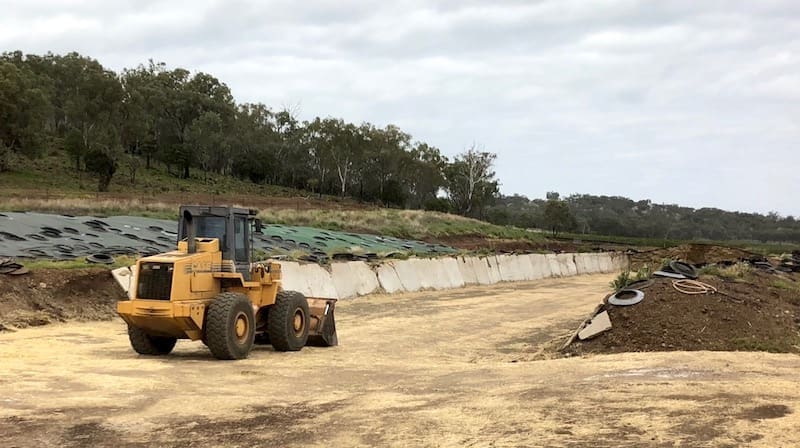
With two large silage pits Dalby Downs has the ability to store 7000t of silage, mostly forage sorghum and in some instances barley, from crops grown on the property. “Silage is the main thing I always make sure we have plenty of and we grow lots of,” Jono explained. He said likes to keep 4000t to 5000t in front of the operation, and typically uses around 2000t in a wet year and 4000t in a dry year. Dry conditions this year mean that with all the cows at home the operation has been putting out 35 tonnes of silage a day.

